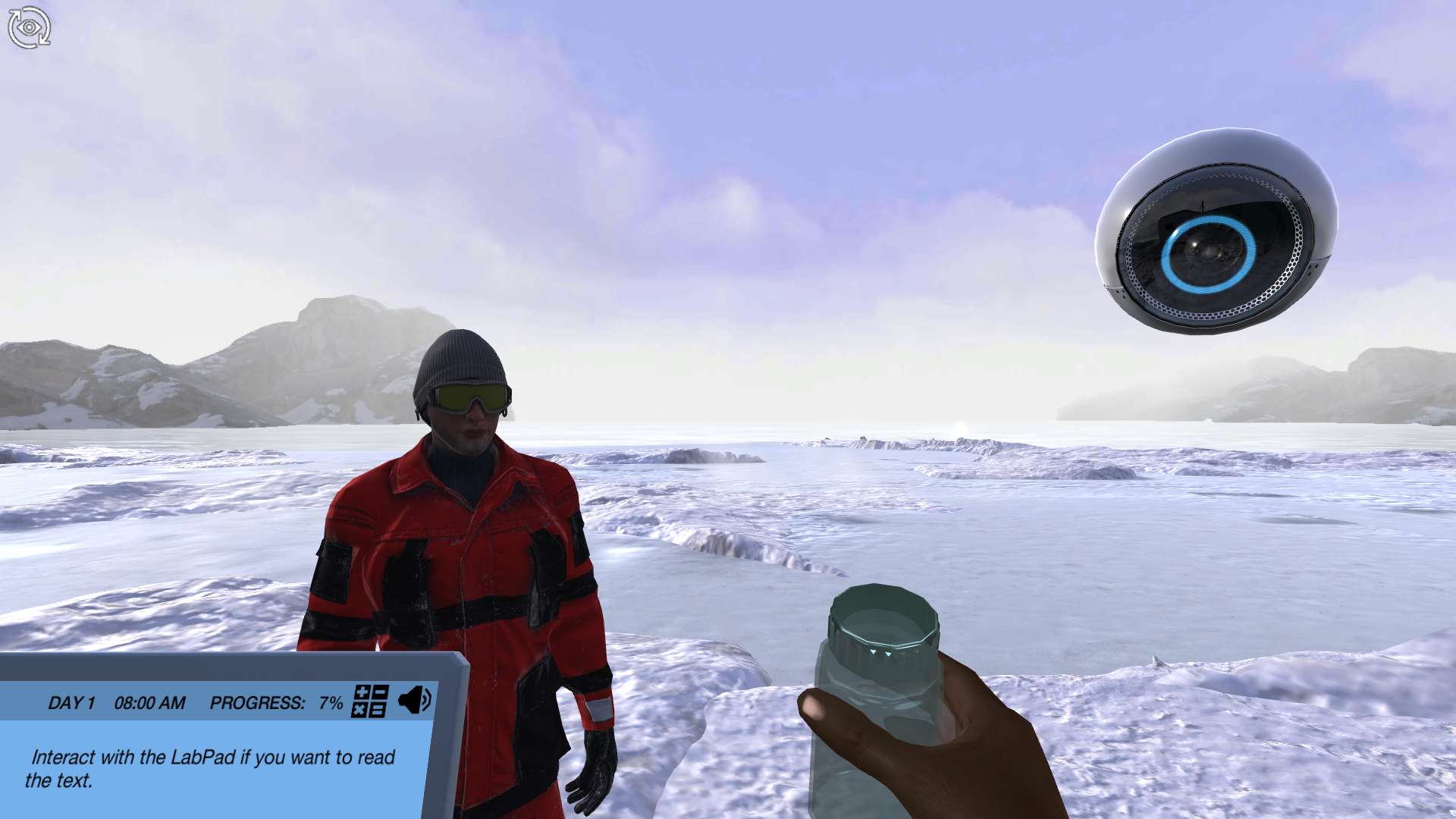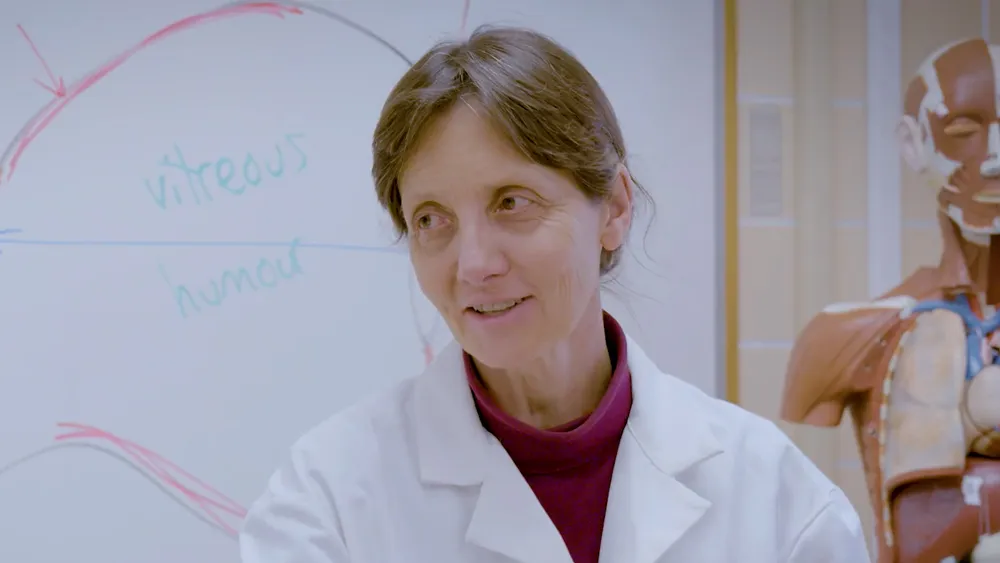Heading 1
Heading 2
Heading 3
Heading 4
Heading 5
Heading 6
Lorem ipsum dolor sit amet, consectetur adipiscing elit, sed do eiusmod tempor incididunt ut labore et dolore magna aliqua. Ut enim ad minim veniam, quis nostrud exercitation ullamco laboris nisi ut aliquip ex ea commodo consequat. Duis aute irure dolor in reprehenderit in voluptate velit esse cillum dolore eu fugiat nulla pariatur.
Block quote
Ordered list
- Item 1
- Item 2
- Item 3
Unordered list
- Item A
- Item B
- Item C
Bold text
Emphasis
Superscript
Subscript
About This Simulation
Visit a research station in Antarctica and help the researcher Nicolas explore bacteria in melting water. Uncover the features that are necessary for bacterial survival and compare these to other bacteria living elsewhere.
Learning Objectives
- Describe the general bacterial cell structure and function, including differentiating between the most common shapes of bacteria and cell arrangements.
- Describe the general bacterial cytoplasmic content and compare it to eukaryotic cytoplasmic content.
- Describe special features of bacteria such as plasmids, flagella or inclusion bodies and how they are necessary for bacteria to survive.
About This Simulation
Lab Techniques
- Microscopy
- Brightfield and darkfield microscopy
Related Standards
- No direct alignment
- No direct alignment
- 1.2 Ultrastructure of cells
Learn More About This Simulation
Global warming is causing the ice to melt in Antarctica, leading to the discovery of bacteria that have survived this extreme environment. In this simulation, you will learn about bacterial cell structures and how these are important for bacterial survival.
Identify bacteria in a sample from Antarctica
First you will collect a sample of melted ice from Antarctica that contains various bacteria. Your task is to investigate what is in the sample, and which bacterial cell structures are important for bacterial survival.
Study and assemble bacterial cell structures
In order to analyze your bacterial sample and to understand the bacterial cell’s internal and external structures, you will explore the motility features and shapes of bacteria in your sample. You will also compare the outer and inner bacterial cell structures to that of the Eukaryotic cell and assemble the cytoplasmic content of the bacterial and the Eukaryotic cell.
Apply your knowledge
Finally, you will compare your bacterial cell structures to other bacteria and learn which cellular structures are important for the bacteria to survive in extreme environments. Can you help the Arctic researchers decide which survival features they should study?
For Science Programs Providing a Learning Advantage
Boost STEM Pass Rates
Boost Learning with Fun
75% of students show high engagement and improved grades with Labster
Discover Simulations That Match Your Syllabus
Easily bolster your learning objectives with relevant, interactive content
Place Students in the Shoes of Real Scientists
Practice a lab procedure or visualize theory through narrative-driven scenarios


FAQs
Find answers to frequently asked questions.
Heading 1
Heading 2
Heading 3
Heading 4
Heading 5
Heading 6
Lorem ipsum dolor sit amet, consectetur adipiscing elit, sed do eiusmod tempor incididunt ut labore et dolore magna aliqua. Ut enim ad minim veniam, quis nostrud exercitation ullamco laboris nisi ut aliquip ex ea commodo consequat. Duis aute irure dolor in reprehenderit in voluptate velit esse cillum dolore eu fugiat nulla pariatur.
Block quote
Ordered list
- Item 1
- Item 2
- Item 3
Unordered list
- Item A
- Item B
- Item C
Bold text
Emphasis
Superscript
Subscript
A Labster virtual lab is an interactive, multimedia assignment that students access right from their computers. Many Labster virtual labs prepare students for success in college by introducing foundational knowledge using multimedia visualizations that make it easier to understand complex concepts. Other Labster virtual labs prepare learners for careers in STEM labs by giving them realistic practice on lab techniques and procedures.
Labster’s virtual lab simulations are created by scientists and designed to maximize engagement and interactivity. Unlike watching a video or reading a textbook, Labster virtual labs are interactive. To make progress, students must think critically and solve a real-world problem. We believe that learning by doing makes STEM stick.
Yes, Labster is compatible with all major LMS (Learning Management Systems) including Blackboard, Canvas, D2L, Moodle, and many others. Students can access Labster like any other assignment. If your institution does not choose an LMS integration, students will log into Labster’s Course Manager once they have an account created. Your institution will decide which is the best access method.
Labster is available for purchase by instructors, faculty, and administrators at education institutions. Purchasing our starter package, Labster Explorer, can be done using a credit card if you are located in the USA, Canada, or Mexico. If you are outside of North America or are choosing a higher plan, please speak with a Labster sales representative. Compare plans.
Labster supports a wide range of STEM courses at the high school, college, and university level across fields in biology, chemistry, physics, and health sciences. You can identify topics for your courses by searching our Content Catalog.















